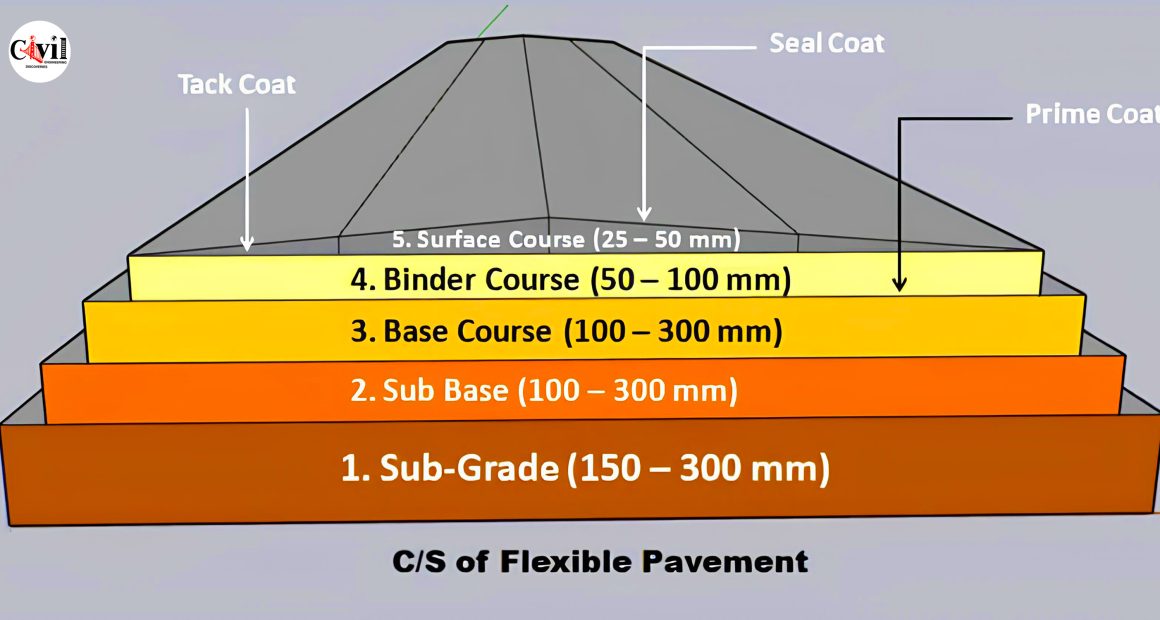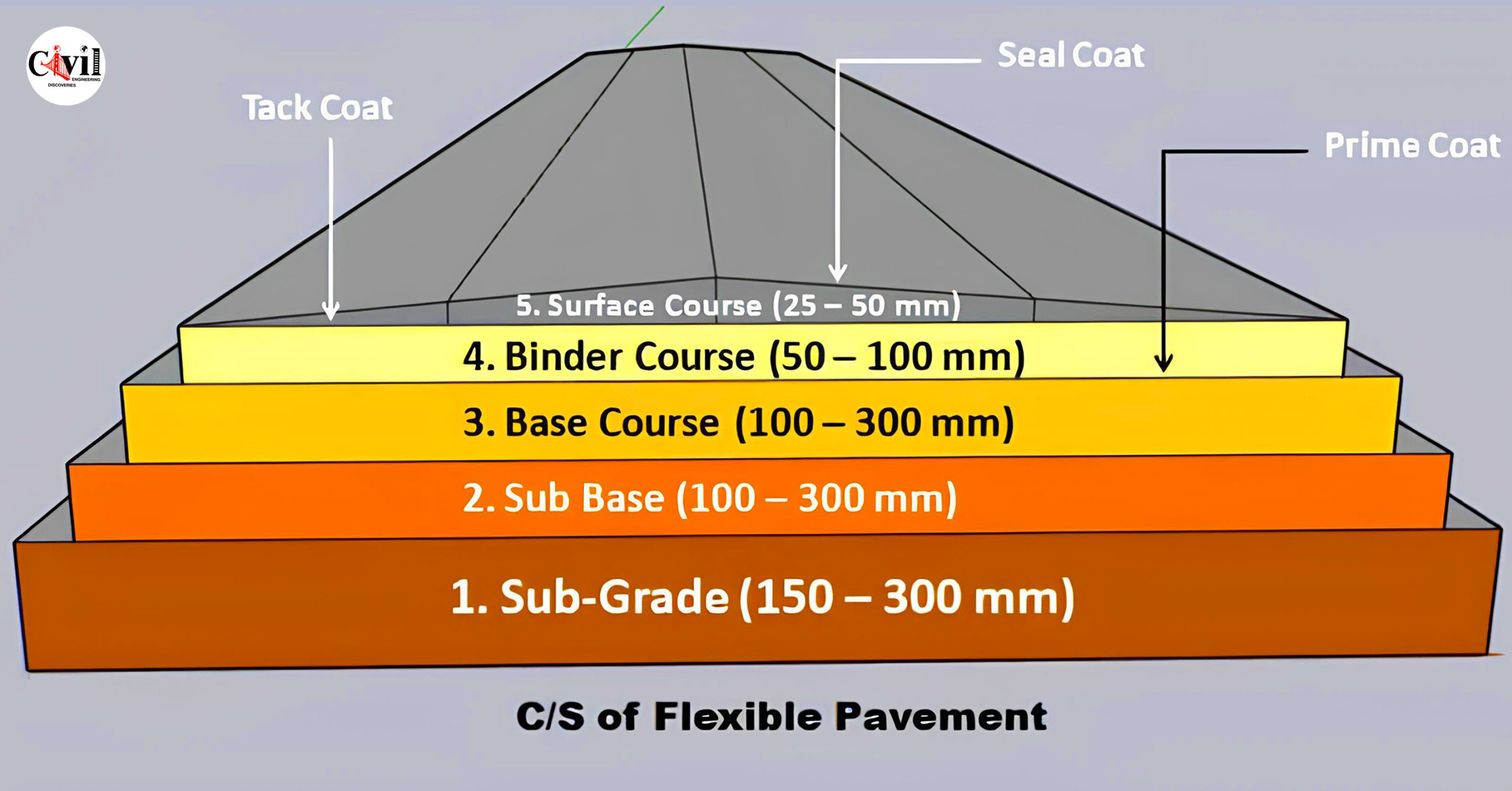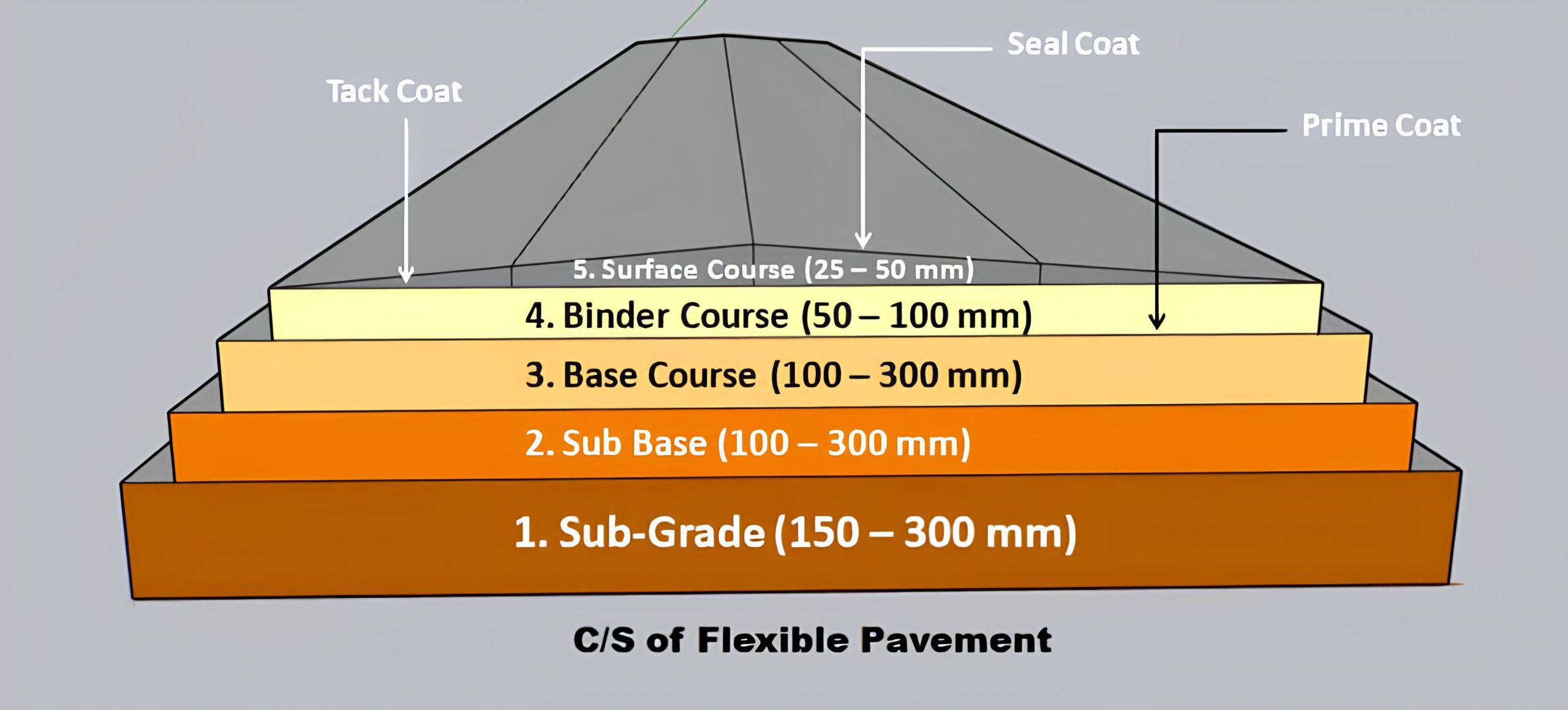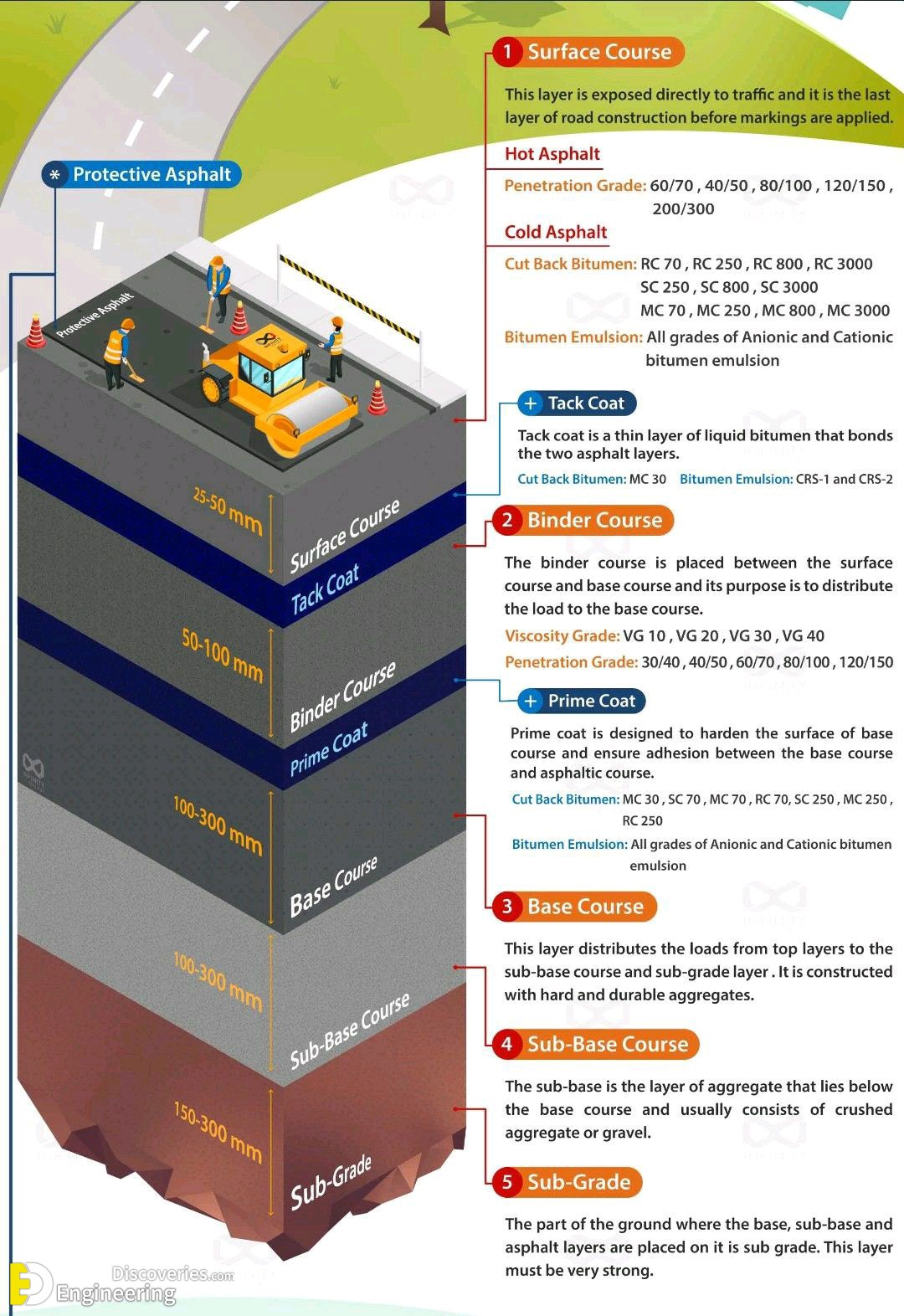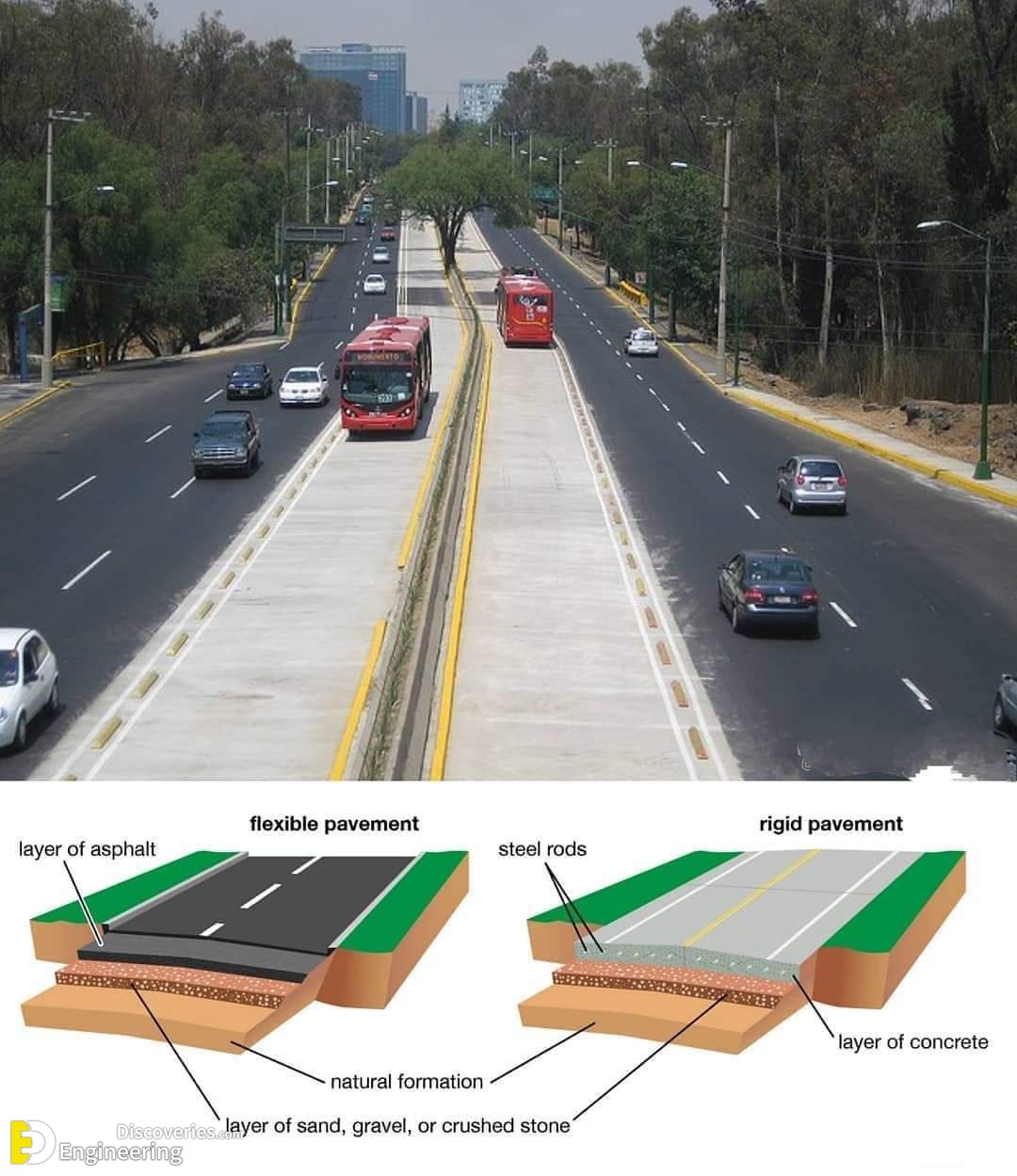Flexible pavement in road construction is a type of pavement that transmits the imposed wheel load to the underlying layers by a grain-to-grain transfer mechanism. It is constructed in several layers, with the topmost layer of the best quality as it is subjected to maximum stress, wear, and tear.
Here are the layers of flexible pavement:
- Surface Course: This is the topmost layer of flexible pavement which has direct contact with the vehicular loads. It is constructed with good-quality aggregates and highly dense bitumen or asphalt. The main function of the surface course is to provide a skid-resistance surface, friction, and drainage for the pavement.
- Binder Course: This layer is constructed using aggregates and bitumen but with less quality than the materials used for the surface course. The function of the binder course is to transfer the loads coming from the surface course to the base course.
- Base Course: This layer distributes the loads from the top layers to the underneath subbase and sub-grade layers. It provides structural support for the pavement surface.
- Subbase Course: This layer functions similarly to the base course. If the sub-grade soil is strong and stiff, then there is no need for a sub-base course.
- Frost Protection Layer: This layer is provided for the pavements in colder regions where temperatures are very low. It prevents damage to pavement from frost heaves, which are formed by freezing of groundwater.
- Subgrade: This is the bottommost layer which is nothing but a natural soil layer compacted up to the required depth generally about 150 to 300 mm to receive the loads coming from the top layers.
Each layer has a specific function and is made from specific materials to ensure the durability and longevity of the pavement.
Advantages of Flexible Pavement:
- Low Initial Construction Cost: Compared to rigid pavements, flexible pavements are cost-effective during construction.
- Simple Repair Work: Repairing flexible pavements is relatively straightforward.
- No Glare: Unlike concrete, asphalt doesn’t cause glare due to sunlight.
- Easy Underground Work: Locating and repairing pipes or utilities is easier with flexible pavements.
Disadvantages of Flexible Pavement:
- Durability: Flexible pavements have a shorter lifespan (approximately 10 to 15 years) compared to rigid pavements.
- Maintenance Cost: Maintenance expenses are higher.
- Night Visibility: Asphalt surfaces may have poor night visibility.
- Effect of Temperature: Temperature variations affect stress distribution.
Comparison with Rigid Pavement:
- Flexible pavements transfer wheel loads through a grain-to-grain mechanism, while rigid pavements use slab action.
- Rigid pavements have higher initial construction costs but longer lifespans.
- The choice between the two depends on factors like load distribution, durability, and maintenance requirements.
Click Here To See How To Calculate Asphalt Quantity For Road
